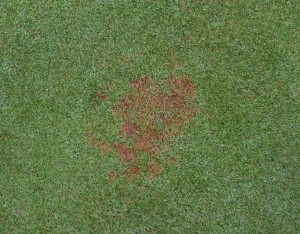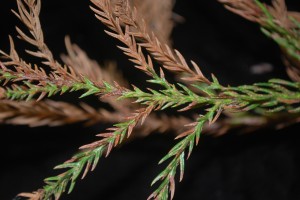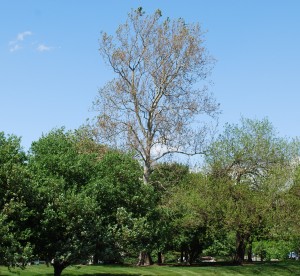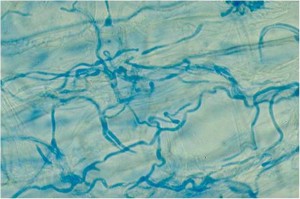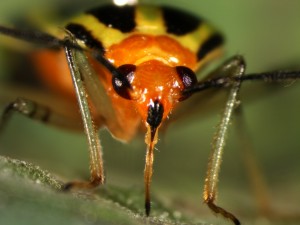Red leaf spot of creeping bentgrass is a poorly understood leaf spot disease in turfgrass. Almost all golf course superintendents think they have it at one point or another, but nobody ever really does.
Nematoda No Antidota?
Golf turf sample submission has been rather slow so far this season. Arguably, cooler temperatures and ample precipitation this spring have provided us with excellent growing conditions for cool-season turfgrass. As long as everybody’s grass looks good, then submissions stay down (bring on some heat!). There has been one exception this season, which is the frequent submission of samples for nematode analysis.
Maskelled Bandit
If you don’t pay attention, the Maskell bandit will steal the health of your conifers. Maskell scales, Lepidosaphes pallida, will cause needle browning and branch dieback on Cryptomeria, Sciadopitys, and Pinus thunbergiana. Heavy infestations can cause tree death.
The Emperor has No Clothes
Have you noticed in the landscape that the sycamores, and to a lesser degree, the plane trees are devoid of leaves? Anthracnose of Platanus species is a well known disease in our area. The disease causes leaf and shoot blight, twig cankers, and branch dieback, and has been particularly severe this spring.
Bizzaro World Turfgrass Edition
The fungus Epichloë typhina, several other species of Epichloë, and the closely related asexual species of form genus Neotyphodium, are symbionts of cool-season grasses, which are known as “endophytes.”
Now You See Me, Now You Don’t
Four-lined plant bugs are tearing up in the home landscape this week. This true bug feeds on more than 250 mostly herbaceous and small woody ornamental plants. Like Jack Reacher, they are alert, quick, and difficult to detect.
